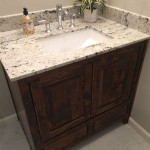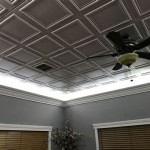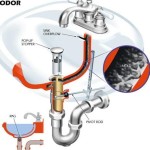Can You Remodel A Bathroom Without A Permit? Navigating the Regulatory Landscape
Remodeling a bathroom can significantly increase a home’s value and improve its livability. However, before commencing such a project, homeowners often grapple with the question of permits. The need for a permit depends on the scope of the remodeling project and the local regulations in place. Understanding these regulations is crucial to avoid potential fines, legal complications, and issues during future property sales.
Permits are essentially approvals from local governing bodies that ensure construction work adheres to safety standards and building codes. These codes are in place to protect the health and safety of the inhabitants and the integrity of the structure itself. They address issues such as plumbing, electrical wiring, structural stability, and accessibility for people with disabilities.
Generally, minor cosmetic changes that don't involve altering the structure, plumbing, or electrical systems are less likely to require a permit. However, it is paramount to verify this with the local building department, as interpretations and enforcement can vary widely.
Failure to obtain necessary permits can lead to various consequences. These may include stop-work orders, fines, legal action, and difficulty selling the property in the future. During a home inspection for a sale, unpermitted work often flags as a major concern for potential buyers, potentially leading to reduced offers or even the termination of the sale.
Key Point 1: Defining the Scope of Your Bathroom Remodel
The first step in determining whether a permit is required is to precisely define the scope of the bathroom remodel. This involves a detailed assessment of the work to be performed. Are you simply replacing fixtures in the same location, or are you planning to move plumbing lines or electrical outlets? The answers to these questions will significantly impact the permitting requirements.
Cosmetic changes such as painting, replacing a toilet with the same model, or installing a new vanity without altering plumbing lines typically do not necessitate a permit in many jurisdictions. However, even seemingly simple tasks can trigger permit requirements if they involve alterations to the existing infrastructure.
For example, replacing a bathtub with a shower stall might require a permit if it involves altering the drainpipe configuration. Similarly, even swapping out a light fixture could require a permit if it involves changes to the electrical wiring behind the wall. The key is that anything which ventures beyond a like-for-like replacement is often subject to inspection.
Therefore, developing a comprehensive plan outlining all aspects of the remodel is crucial. This plan should include specific details about the fixtures, materials, and intended alterations to the existing structure, plumbing, and electrical systems. This document will serve as a reference point when contacting the local building department.
It's also important to consider the age of the home. Older homes may have wiring or plumbing that is not up to current code. Any work that exposes these older systems might necessitate bringing them up to current code, which will almost certainly require a permit.
Key Point 2: Contacting Your Local Building Department
The most reliable way to determine whether a permit is required for a bathroom remodel is to contact the local building department. Each municipality has its own set of regulations and codes, so what might be permissible in one area could be strictly prohibited in another.
Prepare to clearly and concisely explain the scope of your project to the building department representative. Having a detailed plan available will be beneficial in this conversation. Be prepared to answer questions about the type of work, the materials being used, and any alterations to existing systems.
Many building departments have websites that provide information about permit requirements and application processes. Look for resources such as building codes, permit applications, and frequently asked questions. Some municipalities even offer online permit applications and tracking systems.
It's advisable to document all communication with the building department, including the date, time, and the name of the representative you spoke with. Keep records of any advice or instructions provided, as this documentation can be invaluable if any discrepancies arise later on.
Don't rely on anecdotal evidence or assumptions when it comes to permit requirements. What a neighbor did or what a contractor told you might not be accurate. The local building department is the definitive source of information regarding permit regulations in your area.
Some building departments offer pre-construction consultations where you can discuss your plans with an inspector before starting the work. This can be a valuable opportunity to identify potential issues and ensure that your project complies with all applicable codes.
When contacting the building department, inquire about the specific codes that apply to bathroom remodeling projects. Common codes include the International Plumbing Code (IPC), the International Residential Code (IRC), and the National Electrical Code (NEC). Understanding these codes will help you ensure that your project is completed safely and in compliance with regulations.
Key Point 3: Common Scenarios Requiring Permits
While minor cosmetic changes often fall outside of permitting requirements, several common bathroom remodeling scenarios typically necessitate obtaining a permit. These scenarios often involve alterations to the building's structure, plumbing, or electrical systems.
Moving plumbing lines is almost always a trigger for a permit. This includes relocating a toilet, sink, or shower. Modifying drainpipes, water supply lines, or vent stacks requires skilled labor and compliance with plumbing codes to prevent leaks, backups, and other plumbing problems.
Electrical work, such as adding new outlets, moving existing outlets, or installing new lighting fixtures, typically requires a permit. Electrical work is inherently dangerous, and compliance with electrical codes is essential to prevent fires, shocks, and other electrical hazards.
Changes to the structure of the bathroom, such as removing or altering walls, expanding the room's footprint, or modifying load-bearing elements, will almost certainly require a permit. Structural changes can compromise the integrity of the building if not performed properly.
Installing or replacing a water heater usually requires a permit. Water heaters are subject to specific safety regulations to prevent explosions and scalding hazards.
Adding a new bathroom to a house is almost always subject to strict permitting requirements. This involves extensive plumbing, electrical, and structural work, all of which must comply with applicable codes.
Creating a new window or altering an existing window opening usually demands a permit. Window installations need to conform to energy efficiency standards and structural safety regulations.
Shower and tub replacements are often subject to permitting, especially if the drain or water supply configuration is being altered or if the new fixture is larger or heavier than the old one. Weight considerations and proper waterproofing are addressed by such permits.
Even seemingly simple projects, such as installing a new exhaust fan that requires cutting through the ceiling or wall to vent outside, can trigger permit requirements.
Additionally, if the remodeling project increases the value of the home by a significant amount, local tax assessors may need to be notified, and this process may be integrated with the permitting process.
Understanding these common scenarios will help homeowners anticipate potential permitting requirements and plan their projects accordingly.
It is always recommended to err on the side of caution and obtain the necessary permits. While it might seem like an extra expense and a bureaucratic hurdle, obtaining permits ensures that the work is performed safely, complies with building codes, and protects the homeowner from potential legal and financial repercussions in the future. Furthermore, this is in the best interest of all parties involved, including future owners and neighbors.
If doubts persist, homeowners should consult with qualified contractors or design professionals familiar with local building codes and permitting processes. These professionals can provide expert guidance and assist with the permit application process.

Do You Need Permits To Remodel A Bathroom Sweeten Com

Permits For Bathroom Remodeling Projects Complete Guide

Permits For Bathroom Remodeling Projects Complete Guide
Do You Need A Permit To Remodel Your Bathroom Quora

Do You Need A Permit To Remodel Bathroom 2024 Guide

Do You Need Permits To Remodel A Bathroom

Permits For Bathroom Remodeling Projects Complete Guide

Do You Need Permits To Remodel A Bathroom In Mdm Custom Remodeling
Bathroom Remodel Permit Process When Why How To Acquire

Do You Need A Permit In For Bathroom Remodeling
Related Posts







